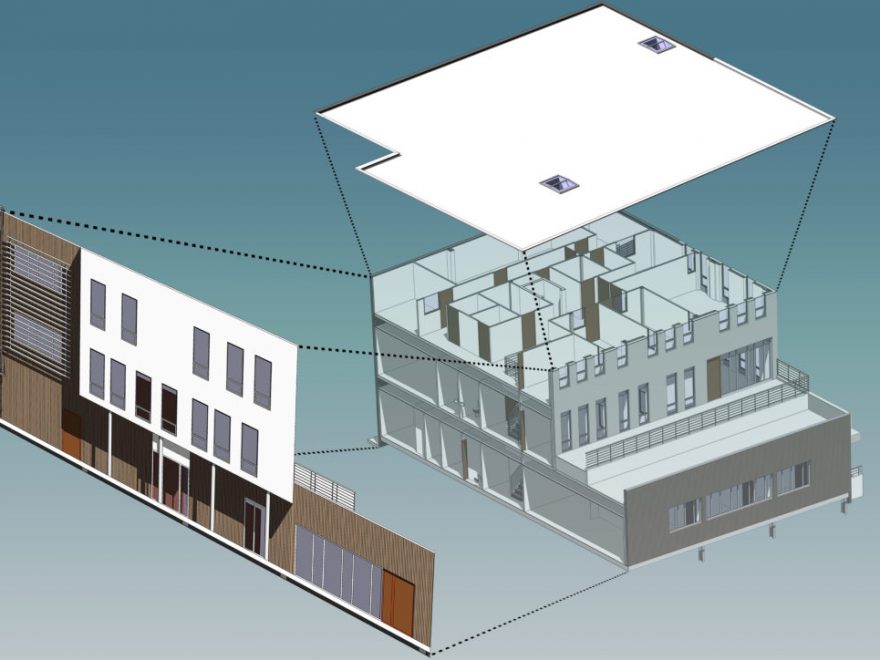BIM for Architecture: Enhancing the Design Process

Architecture is witnessing one of the biggest transformations since the introduction of digitalized drawing technology AutoCAD. Building Information Modelling (BIM) is a single digital model of a building on which all the stakeholders of the building can work on. It serves as the knowledge warehouse for the building. It is a “smart” approach to design, implementation, and documentation of the project.
Supports Design Iterations and extraction of Construction Drawings: Traditionally, an architectural design used to start with a 2D line drawing, either on a paper or on AutoCAD. These lines were drawn in a manner that represented the element of the building. For e.g. to represent a window, lines have to be sketched accordingly so as to denote the symbol for the window.
However, with BIM, you can directly pick the “window” from the software library or you can create a “family” for your required type of window. This can be stored in your local library and can be used for future projects. BIM is an intelligent process that is more than just joining lines. Different elements are assembled together to create a model of the building. It is easier to make alterations and update the models and the drawings get updated automatically. The construction drawings can be extracted directly from the BIM model. Thus, it eliminates the repetitive and laborious task of creating drawings for the design. The architects can, rather, focus on the design aspects without having to worry about the corresponding changes in the drawings. This gives them more flexibility and allows them to be more creative while exploring the design avenues.
Creates Data-rich models: BIM enables more transparency in the design process as it serves as a tool to document the process. This information is accessible to all the parties involved in the project: the architects, designers, constructor as well as the client; thereby bringing transparency to the process.
Detail-oriented approach: 3D BIM models can have varying level of details based on the requirement of the client. Level of Detail (LOD) defines the different components that will be present in the model. By confirming the LOD at the design development stage, you can create a model that can be used by various stakeholders at different stages of the project.
Solves Design Problems: BIM helps in creating sustainable buildings by analyzing and simulating various scenarios. 3D BIM coordination tools can be used to identify the problems early on in the design stage and can be resolved directly on the model and updating them in real time.
Aids Visualization: BIM provides a platform for integrating visualization with the design of the building. Designers are able to view the building from all angles. They can virtually enter the building and get a sense of space even before it is built. Therefore, any design flaws that might have been overlooked previously can be identified and rectified before the construction activity commences.
Because of the numerous benefits that BIM has to offer to the architects, many architectural firms are moving towards adopting BIM. Many of them seek to outsource this to firms that have an expertise on these projects for better project and cost management. Tesla Outsourcings Services has been one of the most sought-after service providers in the field of Architectural BIM services.